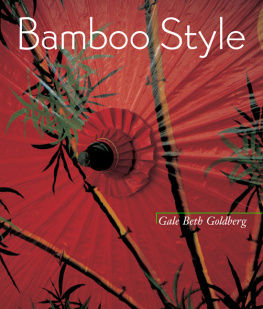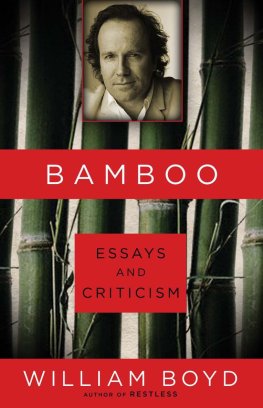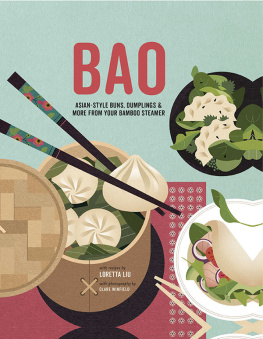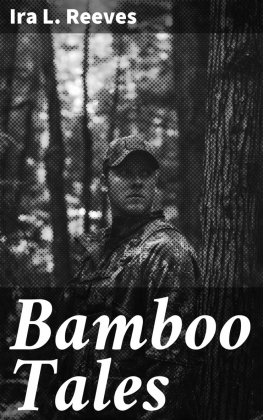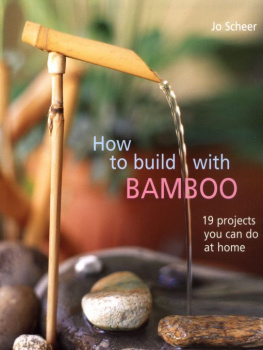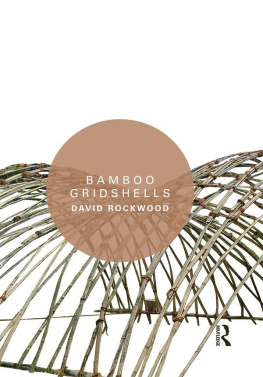All rights reserved. No part of this book may be reproduced by any means whatsoever without written permission from the publisher, except brief portions quoted for purpose of review.
Acknowledgments
With my spirit, I give thanks and express my gratitude. In the spirit of this bamboo book, I have merged the images of bamboo with the people who have made contributions to the creation of Bamboo Style.
A birth. Building a book instead of building a building.
Of love and passion, obsession and compulsion.
So many people have participated in the realization of this compilation of bamboo in so many Ways.
In gratitude, I thank artists, artisans, architects, authors, bamboo believers, constructors, contractors, connectors, crafters, devotees, dwellers, designers, engineers, enthusiasts, experts, earthlinkage, FedExers, financial supporters (ABS, SoCal ABS, NCCABS, NEABS, EARF), furniture makers, friends, gregariousness of flowerings, growers, green doers, green gardeners, gardens, google, GS & GSP, habitus, homeowners, horticulturists, indefatigable interior designers, iron grass-vegetable steel, jewelers, knowers, lovers, landscape architects, language, manifesters, manufacturers, musicians, MACintosh experts, my magnanimous editor madge, nursery people, olam, plantations, professors, photographers, painters, pandas, the queen, rhizomatic worldwide network, sculptors, sellers, teachers all along the Way, umbrella makers, voices of bamboo speaking their bamboo truths and wisdom, writers, wonderment of bamboo, xamples, young shoots, and zealots.
Another tropical rainstorm changes from torrents to drizzle.
The heavy, dark gray clouds dissolve as an azure blue sky becomes the backdrop for the sage-green, tapering, giant grass stalks of the bamboo forest.
Heavy winds have become gentle zephyrs. Shades of jade color the bamboo culms, or stalks, and their arching branches ending in clusters of lancet-like leaves.
They speak in whispering voices: a moan, a creak, an exhalation.
A bamboo grove is a sacred place where one goes to listen, where one goes to observe the new shoots rapidly elongating as they stretch upward.
A bamboo grove is where one goes to touch the smooth, vertical fibers regularly divided and reinforced by horizontal interruptions.
Bamboo is many things to many people.
It embodies the interconnectedness of all life on this planet:
To grow and cultivate a plant that nourishes the soil, soul, and the grower.
To harvest the plant, treat it against unwanted beetles, and prepare the stock of cut culms for transport.
To distribute the readily renewable resource to the right places.
To be utilized in more than a thousand ways by skillful designers, craftspeople, manufacturers and their teams of transformers.
To be exposed to and appreciate the value of bamboo.
To have bamboo in your possessionliving or crafted.
Engage actively in this inter-lifecycle and you become a part of the consciousness to sustain and preserve the earths global resources.
Foreword by Linda Garland
Bamboo is a rising star among organic building materials. Designers who for years have been using hardwoods are becoming enchanted with the aesthetics of bamboo, a readily sustainable material for building homes, designing furniture, and crafting accessories.
Bamboo is one of natures miracle plants. Its ratio of strength to weight is better than graphite, and it is the fastest-growing plant on earth. In the past hundred years alone, we have seen bamboos versatility in Edisons light bulb filament, in gramophone needles, and in airplane wings.
This book is the spirit of hope and beauty, and the inspiration is bamboo.
At the turn of the twentieth century, Chippendale in England created a collection of bamboo furniture that became trendy. This gave birth to 150 bamboo-furniture factories in England. There have been other manifestations of interest in bamboo design through the years.
In 1995, a group of bamboo advocates created the backdrop for the Fourth World Bamboo Congress. Gale Goldberg and twenty others who believed in the importance of taking action worked night and daysome for years, others for monthsto make the conference a reality, all of us volunteering our skills for bamboo, the timber of the future . There was a strong feeling that what we were doing was important. Some, like Gale, were inspired to take this new knowledge and create possibilities for others to learn. And so this book is born.
Many other beginnings took place at the 1995 conference in Bali. Simon Vlz, who had never left his homeland of Colombia, was invited to present his work and we were all smitten with his architectural genius. Gunter Pauli from the ZERI (Zero Emissions Research Initiative) Foundation was also in attendance, and seeds were sown for the Hannover Project, which single-handedly took the perception of bamboo to the level of a high-tech engineering material. German building-code officials approved the bamboo species of Guadua as a structural material for the ZERI Pavilion at the Hannover 2000 Worlds Fair. The program on the properties of bamboo in the industrial design division and furniture department at the Rhode Island School of Design is now in its fifth year. All of these foundations have added to the understanding of the appropriate use of the material.
My fascination with bamboo started as a child in Ireland, where the Gulf Stream allowed us to have tropical gardens. Later, in the early 1970s in Bali, where I had made my home, I grabbed onto the outrigger of a fishermans boat as I surfaced from a dive. To my surprise, the outrigger turned out to be a species of giant timber bamboo. I convinced the fisherman to take me to the forest where the boatmen harvested their bamboo poles. I will never forget the first time I saw those giantsnearly ten inches in diameter and a hundred feet talloverlapping in Gothic arches almost like a jungle cathedral. And so my bamboo journey started.
The first step was a furniture collection that I created and used in many projects over the years. You may have seen the furniture in the Architectural Digest issues on Richard Bransons island, Necker; David Bowies house on Mustique; and Ian Flemings house in Jamaica, which is now owned by Chris Blackwell. My bamboo pieces can be found in castles in Scotland, palaces in India, and beach houses in Fiji. Across the globe, the beauty of these giants continues to captivate.
And so we continue. I love what Gale is adding to this tapestry that has for thousands of years continued to be contemporary. It is my hope that, after being inspired by her bamboo journey, you, too, will join the ever-growing family of believers.

